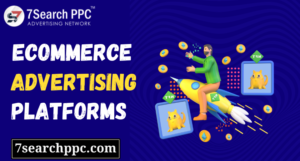By way of introduction, I am Harshita Radesh Kumar, a post graduate student pursuing MSc Computer Engineering at University of Birmingham.
Mine being a one year programme, I wanted to make the best out of my journey here while it lasts. It was during the cosy winters, I learnt from our college website that Siemens has partnered with the University of Birmingham to host an engineering design competition for students. I am myself from an engineering background and what better news could I have read.
I realised the time has come to buck up and attend the four day bootcamp to explore and gain a new learning experience. Waking up to attend the boot-camp at 9.30am was indeed reinvigorating. It was my first ever introduction to a super cool development software called Solid Edge.
I was amazed at how the User Interface (UI) was built; I’d say a very convenient software to learn, work on and implement an idea. The session by Paul was informative demonstrating various features of the software – its ease of deployment, parts integration, scalability and last but not the least, the ease of customisation. I was all pumped up during the latter half of the session where we were introduced to the task – a full gamut of product designing to marketing.
Our mentors designed the programme very thoughtfully; for instance, we were assigned to group with students from diverse backgrounds.
My team was made of five students – Aaron Walsh (Biological Sciences), William Kasafir (Mathematics and Computer Sciences), Xiang Fei Heah (Chemical Engineering), Freddie Ingles (Liberal Arts and Natural Sciences and myself.
With diverse background and courses comes multiple perspectives. We as a team brought a variety of backgrounds, cultures, and experiences, thereby looked at the task in an innovative notion. I believe, we eventually worked and came up with a thoroughly vetted result.
Having said the above, we did have the initial disengagement, the obvious differences in talent and uncertainty in our roles; during the course of session I can, with pride say that we have efficiently collaborated and thoroughly enjoyed the learning process. Yes! We made the seemingly impossible work.
The challenge was to ideate and build a prototype of a device that targets a body muscle that can be used for stretching, relaxation and a device that can be used in tandem with workout.
We as a group unanimously agreed that lower back pain, irrespective of the age group we belong to, has affected our ability to perform. This is simply because of the new module of work ways we are adapting towards. While it is commendable how organisations launched a pilot remote working scheme in the challenging times at the outbreak of a global pandemic, the fact that we are coming to realise eventually is that working at home intuitively intensifies the feeling of isolation, estrangement, lack of creativity and innovation and the most neglected ‘always available’ mentality that is exacerbated in this new work culture.
Considering all the above said factors, we decided to develop the product to aid in desk stretches while sitting all day. Relaxing Recliner – Live a happier, pain free and more productive life is what we called our product. Our design was built keeping three factors in mind, stretches while working, sweat it out while working and the compactness & portability in product design.
The Relaxing Recliner was designed to focus on three major muscles critical for
mobility and mental health – hips (gluteal muscle), thighs (hamstring) and the lower back (erector spinae). Rest and Relaxation has become a cliche; we meticulously developed the product to apply the physical stress of exercise in a controlled and graded fashion such that the physical stress can relieve the mental stress while continuing to work.
mobility and mental health – hips (gluteal muscle), thighs (hamstring) and the lower back (erector spinae). Rest and Relaxation has become a cliche; we meticulously developed the product to apply the physical stress of exercise in a controlled and graded fashion such that the physical stress can relieve the mental stress while continuing to work.
The key components in our product is as follows:
1. Four integrated resistance bands – aids in co-ordination exercises: Forward Fold Hamstring Stretch, Modified Revolving Triangle IT Band Stretch, Modified Seated Pigeon Stretch, Modified Wide-Legged Seated Forward Bend.
2. Pedalling Technology – aids in Hip Marching: loosen the muscles in hips and lower back and releases endorphins-the Happy Hormones, perfect after a long shift at work.
3. Adjustable Recliner- focuses on increased mobility, better circulation, lumbar support, pain & stress relief enabled by deep-tissue air massage and power reclining.
4. Pedal Cell – a basic generator attached to the frame of pedals (mentioned in point 3) such that it is touches the rim.
Pedal to Generate Power – uses simple science (piezoelectric power generation technique) to measure your workout not in terms of calories burnt but in terms of battery percentage on your phone. We were inspired by the Green Read & Ride bike-movement to sustainably design our product.
We had butterflies in our stomach? Or maybe biggest adrenaline rush?
All in all, it was very exciting to present our four days of product ideation and journey of developing our product into a precise 5 minute video to the distinguished jury from Siemens. It was indeed exciting to pitch our product to the industry professionals, subject matter experts and the talented fellow groups.
The Bootcamp has not only introduced us to the robust and convenient Solid Edge software but has introduced us to the entire product life cycle starting from technical aspects of designing a product to developing marketing strategies to sell an idea. We eventually learnt how to believe in our idea and being personable to the target audience.
Amongst the many learnings during the programme, listed below are the four key takeaways.
1. How to get started from scratch.
2. Create as you go whilst collaborating with team from diverse backgrounds.
3. Not ‘I’ but ‘We’ can do it attitude in a time-bound challenge.
4. The sense of completion of the challenge and accomplishment.
The entire journey starting from introducing ourselves to each other in our assigned group to the hustle of learning a new tool and finally tailoring it all in an effective five minute presentation was amazing.
Of course, with views from experts and few inclusions in the scope of work like modifications & improvisations to making the chair foldable into a portable device is our outlook for this product.
During the programme, I also met like-minded fellow-students, nurtured new relationships and gained numerous nuggets of knowledge.
The idea of developing and presenting a working prototype has given each one of us a first hand experience of how a start-up industry and culture feels like. I am, at this point, ready and excited to be a part of this dynamic culture and challenging industry.
Thank you Siemens and UoB!
Written by Harshita Radesh Kumar

.jpg)


.jpeg)


